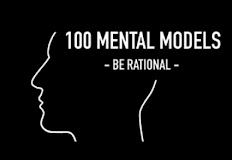 |
| Popular tourist destination Raja Ampat in West Papua. ANTARA/Ernes Kakisina |
Prior to the COVID-19 outbreak, Indonesia had outlined a target to receive at least 17 million foreign tourists in 2020.
However, in the wake of the viral outbreak, the number of foreign tourists visiting Indonesia had dropped sharply in March to 470,900, or equal to the figure in 2007, according to the Central Statistics Office (BPS) on April 4, 2020.
The March figure indicated a 45.5-percent drop as compared to February and 64.11 percent from that in March 2019, according to BPS Head Suhariyanto.
A decline in the number of foreign tourist arrivals was recorded at nearly all main airports, with a 64.72-percent drop at Bali's Ngurah Rai Airport, 75 percent decrease at Jakarta's Soekarno-Hatta Airport, and 64.11 percent decline at Kualanamu Airport, Medan.
The number of foreign tourist arrivals by sea also dropped drastically. Batam seaport in Riau Islands Province recorded a 75-percent drop, while a 92-percent decrease was witnessed at Tanjung Uban. A similar trend was observed among those coming by land, such as in Atambua and Entikong in Kalimantan that shares its border with Malaysia.
Based on nationality, the sharpest decline was observed in the number of tourists arriving from China, reaching 97.46 percent; followed by Hong Kong, down 96 percent; and Kuwait, down 89 percent, according to the BPS.
During the January-March 2020 period, some 2.6 million foreign tourists had visited Indonesia that announced the first confirmed COVID-19 cases on March 2.
Tourism industry activities continued normally in January 2020, though a decline was recorded in February through March 2020. In comparison with the January-March 2019 period, the number of tourist arrivals registered a decrease of 30.62 percent in the first quarter of this year.
As the virus spread to the country’s 34 provinces, the tourism industry in various regions also took a hit.
In Central Java, for instance, the number of foreign tourists in March plummeted by 46.37 percent, from 1,762 in the previous month, to merely 945.
The data was recorded on the basis of foreign tourist arrivals through the province's main airports: Ahmad Yani Airport in Semarang and Adi Soemarmo Airport in Solo.
The average hotel occupancy rate in Central Java in March 2020 had reached 28.63 percent, dropping from 46.36 percent in the previous month.
Bali, one of the world’s most famous resort islands, has also suffered a major blow. Currently, Bali receives some 500 tourists daily, while normally, the number of foreign tourist arrivals was pegged between 10,500 and 11,000 per day. Most of the travelers were Australians.
In February, Bali had welcomed 363,937 foreign travelers, a decline of 31.19 percent from that recorded in January.
Tourism and Creative Economy Minister Wishnutama Kusubandio has forecast a 50-percent drop in foreign exchange revenue from the tourism sector, from US$20 billion recorded in 2019, on condition that the tourism industry would begin recovering in June 2020.
The number of foreign tourists is expected to drop to five million in 2020, as compared to 16 million in 2019, he stated.
However, the minister is upbeat about the sector’s projected gradual recovery in June and expediting in 2021.
He believed the current pressures on the tourism and creative economy owing to the pandemic have, in fact, driven operators to learn strategies to make the industry more sustainable in future.
"It is most important that we can contain this pandemic. I believe that after we go through this remarkable process, the tourism and creative economy sector will grow better than before," he affirmed.
President Joko Widodo (Jokowi) shared a similar viewpoint and believes that the pressure on the tourism and creative economy sectors from the COVID-19 pandemic will allay by year-end, and a rebound is projected in 2021.
"Next year, we will witness a boom in the tourism sector. All people will go travelling. All people are keen to enjoy the beauty of tourist destinations. This optimism must be raised, and we should not become trapped in pessimism," he emphasized.
The government has prepared a post-pandemic economic recovery scenario for the manufacturing industry, tourism, and investment sectors.
Coordinating Minister for Economic Affairs Airlangga Hartato has shed light on the stages of the government’s economic recovery plan that encompass a relaxation of the large-scale social distancing measure, starting early July, as the COVID-19 pandemic is expected to end. In late July or early August, all economic activities are expected to resume across the country.
This is in accordance with the target set by President Jokowi on May 6, 2020, that the curve of the COVID-19 cases must go down this May by all means, he stated. (Antara)





No comments:
Post a Comment
your comments are now being moderated